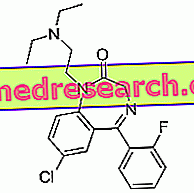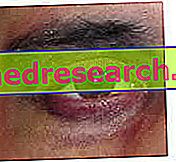Related articles: Night apnea
Definition
Sleep apnea is a respiratory disorder that occurs during sleep and includes central sleep apnea and obstructive sleep apnea.
Central sleep apnea contains a group of conditions characterized by alterations of the stimulus to breathe, in the absence of an airway obstruction. In practice, it depends on the brain. Central apnea can occur in patients suffering from congestive heart failure, central lesions or neuromuscular diseases, such as muscular dystrophy and amyotrophic lateral sclerosis (ALS).
Obstructive sleep apnea, on the other hand, is characterized by episodes of partial or complete closure of the upper airways during sleep, which lead to respiratory interruption (apnea period> 10 sec). The result is a reduction in the concentration of oxygen in the blood, in addition to a reduced quantity or quality of sleep. Risk factors are obesity, post-menopausal status, aging and alcohol or sedation. Anatomic abnormalities that involve obstruction of the upper airways (at the level of the nose, mouth or throat), such as deviation of the nasal septum and hypertrophic tonsils or adenoids can also predispose to the problem.
Sleep apnea is often associated with chronic diseases such as high blood pressure, arrhythmias, heart failure, stroke, diabetes, gastro-oesophageal reflux and hypothyroidism.
Most common symptoms and signs *
- Respiratory acidosis
- Apnea
- Arrhythmia
- Asthenia
- Dry mouth
- Decline in sexual desire
- Cyanosis
- Difficulty concentrating
- Dyspnoea
- Mood disorders
- Shortness of breath
- Atrial fibrillation
- Dry throat
- Nightmares
- Insomnia
- Hypercapnia
- Hypoxia
- Lethargy
- White Tongue in Children
- Yellow tongue
- Headache
- myoclonus
- nocturia
- White patina on the tongue
- presyncope
- Snoring
- Sense of suffocation
- Sleepwalking
- Drowsiness
- Night sweats
- Night terror
Further indications
Central sleep apnea is usually asymptomatic and is detected for restless sleep and long pauses during sleep. On awakening, patients may experience daytime sleepiness and morning headache.
The disorders caused by obstructive sleep apnea, on the other hand, are different and can occur during sleep, on waking or during the day. The interruption of a person's regular breathing activity when asleep causes restless sleep, sudden awakenings with a sense of suffocation and snoring often interrupted by pauses of silence and labored breathing. During the day, the symptoms are represented by agitation, fatigue, difficulty concentrating, feeling of not having rested well, loss of interest in sex, morning headache and excessive daytime sleepiness.
In the long term, sleep apnea can lead to the development of high blood pressure, cardiovascular disease, respiratory failure and metabolic disorders. Furthermore, they can be the cause of car or work accidents, sometimes fatal.
The diagnosis is formulated based on symptomatic criteria and sleep studies (polysomnography and respiratory polygraphy). Treatment is directed first to the control of risk factors, then to sleep apnea. The aim is to reduce hypoxic episodes and sleep fragmentation.
The specific treatment for apneas involves the application of a continuous positive pressure at the level of the airways so that they do not collapse during sleep (CPAP), oral appliances and airway surgery (in case of anatomical alterations or intractable disease).



